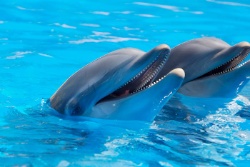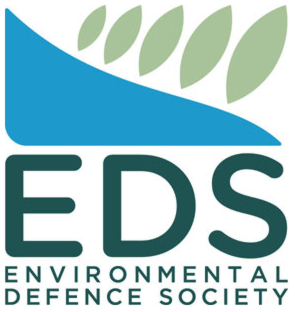Environment Court Confirms 19 Outstanding Water Bodies In Hawke’s Bay
The Environment Court has confirmed that 19 of Hawke’s Bay’s water bodies meet the high threshold to be classified as ‘outstanding’, following appeals on Proposed Plan Change 7 (Outstanding Water Bodies) to the Hawke’s Bay Regional Resource Management Plan.
This outcome concludes the plan change process and ensures that the region’s most exceptional water bodies – including aquifers, lakes, wetlands, rivers and estuaries – will receive the highest level of protection moving forward.
A water body that is classified as ‘outstanding’ holds a cultural, spiritual, recreational, landscape, natural form and character, or ecological values that are conspicuous, eminent, or remarkable within Hawke’s Bay.
Hawke’s Bay Regional Council Group Manager Policy & Regulation Katrina Brunton says, “These are exceptional places. They stand out as the best of the best, and this decision confirms they’ll be recognised and safeguarded for future generations with the health and wellbeing of these water bodies prioritised.”
“While not every water body has been classified as outstanding, many others are highly valued by local communities and tāngata whenua. We remain committed to improving the health and mauri of all water bodies across Hawke’s Bay.”

List of Outstanding Water Bodies in Hawke’s Bay
| Outstanding water body | Outstanding values |
|---|---|
| Heretaunga Plains Aquifer System | Cultural or spiritual values (whakapapa o te wai, wāhi taonga, wairua, mauri) |
| Lake Poukawa and Pekapeka Swamp | Cultural or spiritual values; Ecology (habitat for aquatic native birds) |
| Lakes Rotoroa and Rototuna (the Kaweka Lakes) | Natural character (Lake Rotoroa and Lake Rototuna) Habitat for indigenous aquatic plant community (Lake Rototuna); Habitat for native fish community (Lake Rotoroa) |
| Lake Tūtira (including Lake Waikōpiro) | Cultural or spiritual values |
| Lake Waikaremoana | Ecology, specifically habitat for aquatic native plant communities; Landscape (wild and scenic) values; Natural character; Recreation (central focus of a Great Walk) |
| Lake Whakakī – Te Paeroa Lagoon – Wairau Lagoon and Wetlands | Ecology (habitat for high natural diversity of aquatic native birds) |
| Lake Whatumā | Cultural or spiritual values; Ecology (habitat for aquatic native birds, particularly Australasian bittern) |
| Mangahouanga Stream | Geology (presence of dinosaur fossils) |
| The Mohaka River upstream of Willow Flat | Natural character; Landscape (wild and scenic) values; Recreation, including trout angling, kayaking and rafting; Trout fishery (Mohaka River mainstem and in the tributaries upstream of State Highway 5 bridge) |
| Ngamatea East Swamp | Natural character; Ecology (habitat for indigenous plant populations |
| Ngaruroro River & Waitangi Estuary |
Advertisement - scroll to continue reading
Upstream of the Whanawhana cableway Natural character; Landscape (wild and scenic) values; Rainbow trout habitat; Recreation (trout angling, whitewater rafting, kayaking); Habitat for native aquatic birds (particularly whio)
Downstream of the Whanawhana cableway Habitat for native aquatic birds (including banded dotterel, black fronted dotterel)
Downstream of the Whanawhana cableway to Fernhill Natural form and character (braided river)
Waitangi Estuary Cultural or spiritual values including wāhi taonga, mauri |
| Ruataniwha Plains Aquifer System | Cultural or spiritual values (including whakapapa o te wai) |
| Taruarau River | Natural character, especially the gorge; Recreation (whitewater rafting and kayaking) |
| Pōrangahau River and Estuary downstream of the Beach Road Bridge | Cultural or spiritual values; Ecology (habitat for native aquatic birds) |
| Te Hoe River | Landscape (wild and scenic) values; Habitat for aquatic native birds (particularly whio) |
| Te Karamū River | Cultural or spiritual values including wāhi taonga, whakapapa o te wai, nohoanga/pāhi |
| Te Whanganui-a-Orotū (Ahuriri Estuary) | Cultural or spiritual values including wāhi taonga; Aquatic bird habitat; Native fish habitat |
| Tukituki River downstream of SH50 bridge to the sea, including the estuary | Cultural or spiritual values including wāhi taonga for the estuary Ecology (habitat for native aquatic birds, particularly in the lower river) |
| Mainstem of the Tūtaekurī River upstream of the SH50 Bridge | Cultural or spiritual values |
More Information
The Environment Court’s final decision is available on the Hawke’s Bay Regional Council website: https://www.hbrc.govt.nz/hawkes-bay/projects/outstanding-water-bodies/


 Gordon Campbell: On The Costs Of Regulating Cost, And Burkina Faso As A Role Model
Gordon Campbell: On The Costs Of Regulating Cost, And Burkina Faso As A Role Model Helen Clark Foundation: The Helen Clark Foundation Launches Honorary Fellow Programme
Helen Clark Foundation: The Helen Clark Foundation Launches Honorary Fellow Programme Department of Conservation: Call For Public Information On Auckland Marine Mammal Cases
Department of Conservation: Call For Public Information On Auckland Marine Mammal Cases New Zealand Jewish Council: NZ Jewish Council Clarifies Position - Advocating For Safety And Accountability, Not Censorship
New Zealand Jewish Council: NZ Jewish Council Clarifies Position - Advocating For Safety And Accountability, Not Censorship NZ Government: Government To Stop Council Plan Changes
NZ Government: Government To Stop Council Plan Changes New Zealand Defence Force: Exercise Talisman Sabre Gets Under Way
New Zealand Defence Force: Exercise Talisman Sabre Gets Under Way Water Industry Operations Group of New Zealand: New Zealand And Australia To Compete For Best-Tasting Tap Water Title
Water Industry Operations Group of New Zealand: New Zealand And Australia To Compete For Best-Tasting Tap Water Title


